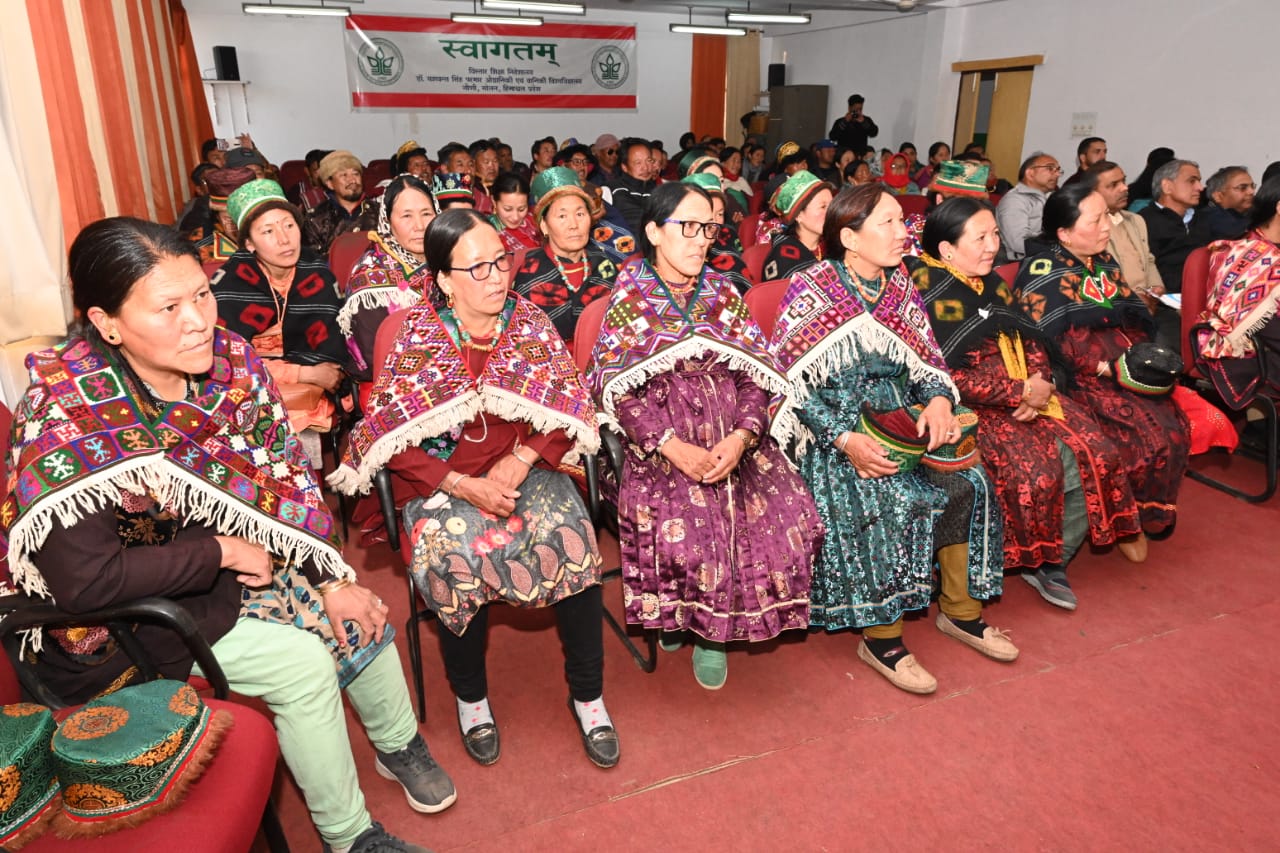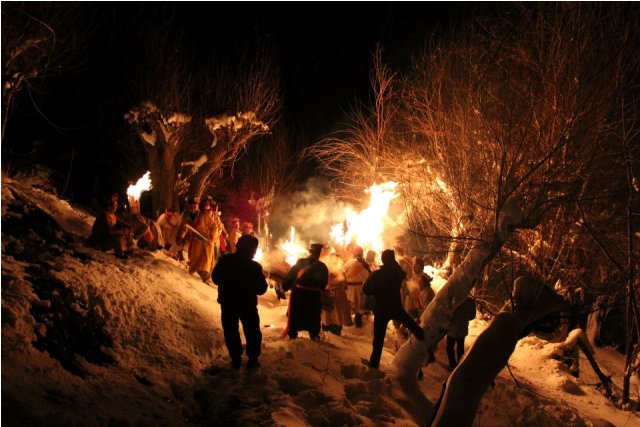Manali: A tribe of Lahaul valley is an endogamous human social group living in a specified terrain, following its own set of rituals, possessing many unique features such as its own dialect, folklore and cultural facets of apparel, instruments, habitat, artifact and music.
Lahaul tribes are often isolated from other people. Their close historical ties with a specific territory and their cultural and historical uniqueness form other politically powerful and numerically larger populations set them apart.
A significant degree of isolation over long periods caused both by their ability to meet their life needs from their own territory and their diffidence in engaging with the dominant population has led to a situation in which their education levels, life and livelihood pattern and skill sets lag behind those of the dominant populations. This then attracts a tag of them being primitive and backward.
There are two principal categories of tribal people in Himachal.
The hill and snow bound tribes live in undulating, hilly, mountainous terrains in the state, which were for long covered with snow and were poorly connected with the rest of the country.
Two aspects have tended to dominate the discourse as well as policies regarding the tribal communities in state.
The first face pertains to their identity and the second to their integration in the mainstream. The issues of identity have been looked at in the following diverse perspectives. Preservation of Tribal languages, other cultural facets of the native people, the way of life of the tribal people and the local governance system
The last perspective is ensuring continued and unfettered access to the resources in the territory identified as the tribal regions.

Lahaul tribal people and activists like to describe them as local people, highlighting the iconic aspect of their identity.
The issues of integration, on the other hand, relate to bringing the fruit of modern development to the tribal populations, or at least containing the effects of such components of their traditions as are considered ancient. It is also important to ensure that nutrition, health and education standards of tribal people show consistent and continuous improvement.
Integration also means encouraging men and women from tribal communities to learn the requisite skills and acquire qualifications and participate in the modern economy on a footing of equality with the rest of the people and ensuring that the natural resources available in the tribal land are put to productive use for the benefit of the nation as a whole.
A conflict is often posited between the goals of conservation of identity of Lahaul tribal people and those of their integration in the mainstream.
A common argument, at times borne by historical experience, runs thus: politically prevailing, economically powerful and shrewd members of the national population find diverse ways to gain control over the natural resources in tribal land for the purpose of creating wealth for themselves and in the process act irresponsibly by destroying the habitat of the tribal communities in Himachal , by uprooting them from their territories causing untold miseries.
Vinod Large, a resident of Tandi village in Lahaul said that these events render it impossible for tribal’s to live harmoniously with their resources in their habitat. Having been rendered homeless and rootless and unable to practice their livelihoods to which they are used, they become commodities as bonded labor.

He added that a counterpoint to the above is voiced less shrilly but often persuasively thus practically all persons of the country, certainly including the large proportion of the dominant population have evolved over a period of time. They no longer live in the habitat of their forefathers, practice livelihoods of their forefathers or practice the same patterns of traditional life, which were led by their ancestors.
Large said “I believe that just as traditional occupations of a large number of people have given way to those in the modern economy for a large number of people, similarly the tribal people need to and have a right to learn and practice modern skills and livelihoods.”
Manoj, a resident also resident of Lahaul said that “It is essentially fascist thinking to state that while the non-tribal people will learn and practice the skills of the 21st century, tribal people must continue to live close to the hunting and gathering stage, wearing traditional and limited attire, eating local cereals and meats, suffering and falling victims to curable diseases and trying to eke out an existence out of resources under threat from both climatic and anthropogenic factors.
He added that thousands of Naga, Oraon and other tribal people have received education and learnt skills and now lives in a manner that is quite similar to the lifestyle of the non-tribal people. Their brethren as well as those others who watch them also want to live in the modern way and enjoy the amenities and facilities available to the leading people. They aspire to contribute as equals to the nation. It would be counterproductive to forcibly constrain them to live in an isolated habitat in the same manner as their ancestors”.
An interesting point to discover is if the very efforts to meet aspirations will necessitate greater integration of the tribal people and reduce the harshness of their drive for sub-cultural identity. Reaching one’s aspirations in the modern day requires interacting with outsiders, exchanging with the market and asserting one’s citizenship. While doing so, shedding one’s parochial identity and accepting greater integration is inevitable.

Sanjay Dutta, an engineer by qualification but is a journalist by choice.
He has worked for the premier new agency Press Trust of India and leading English daily Indian Express.
With more than a decade of experience, he has been highlighting issues related to environment, tourism and other aspects affecting mountain ecology.
Sanjay Dutta lives in a village close to Manali in Kullu valley of Himachal.



Excellent article, very educative, keep up the good work.